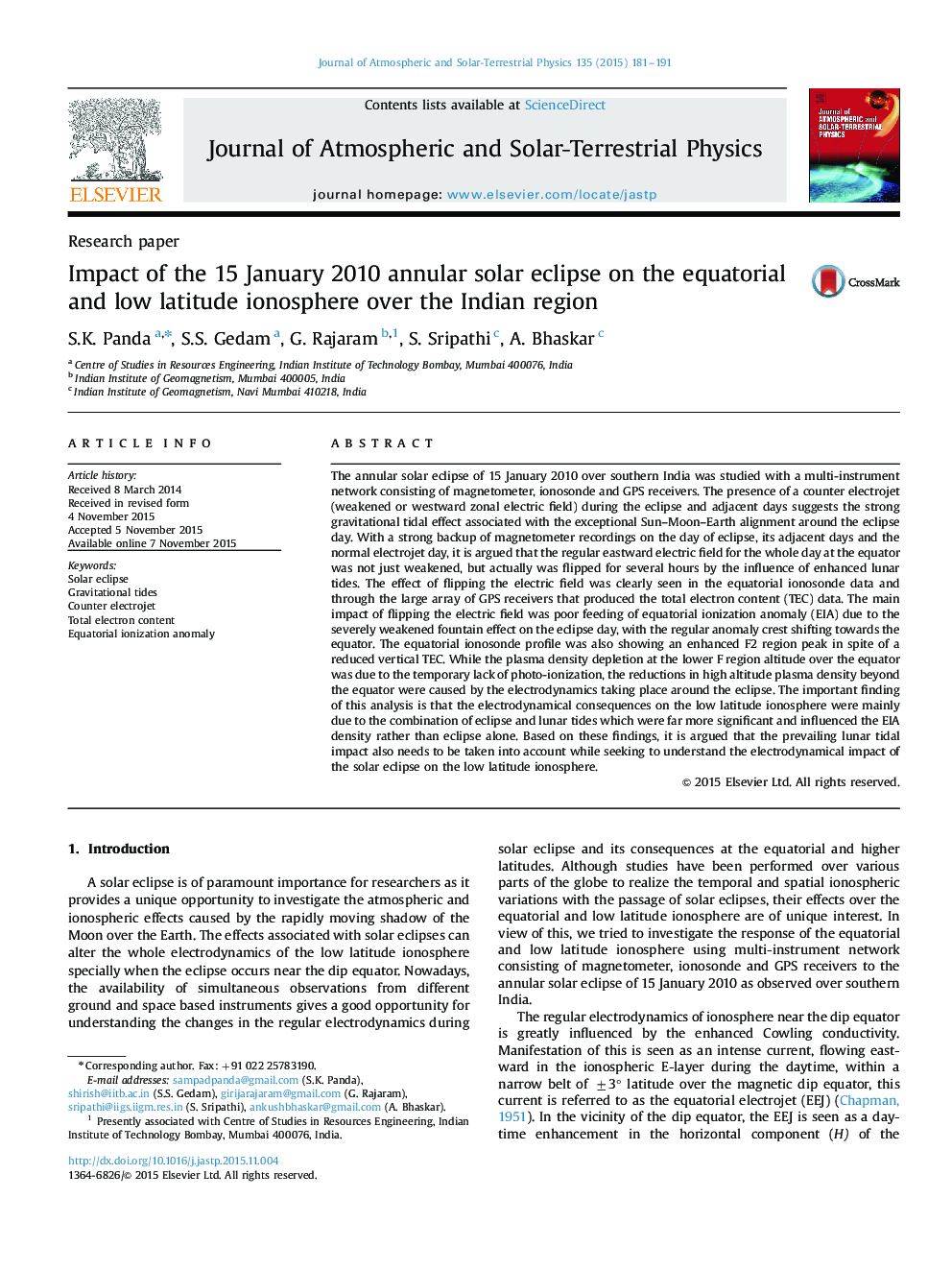| کد مقاله | کد نشریه | سال انتشار | مقاله انگلیسی | نسخه تمام متن |
|---|---|---|---|---|
| 1776280 | 1523609 | 2015 | 11 صفحه PDF | دانلود رایگان |
عنوان انگلیسی مقاله ISI
Impact of the 15 January 2010 annular solar eclipse on the equatorial and low latitude ionosphere over the Indian region
ترجمه فارسی عنوان
تاثیر ناگهانی خورشیدی سالانه 15 ژانویه 2010 بر روی یونوسفر عرض جغرافیایی استوا و کم ارتفاع در منطقه هندی
دانلود مقاله + سفارش ترجمه
دانلود مقاله ISI انگلیسی
رایگان برای ایرانیان
کلمات کلیدی
گرفتگی خورشیدی، جزر و مد گرانشی، الکتریک شمارنده، محتوای کل الکترونی، ناهنجاری یونیزاسیون استواوری،
موضوعات مرتبط
مهندسی و علوم پایه
علوم زمین و سیارات
فیزیک زمین (ژئو فیزیک)
چکیده انگلیسی
The annular solar eclipse of 15 January 2010 over southern India was studied with a multi-instrument network consisting of magnetometer, ionosonde and GPS receivers. The presence of a counter electrojet (weakened or westward zonal electric field) during the eclipse and adjacent days suggests the strong gravitational tidal effect associated with the exceptional Sun-Moon-Earth alignment around the eclipse day. With a strong backup of magnetometer recordings on the day of eclipse, its adjacent days and the normal electrojet day, it is argued that the regular eastward electric field for the whole day at the equator was not just weakened, but actually was flipped for several hours by the influence of enhanced lunar tides. The effect of flipping the electric field was clearly seen in the equatorial ionosonde data and through the large array of GPS receivers that produced the total electron content (TEC) data. The main impact of flipping the electric field was poor feeding of equatorial ionization anomaly (EIA) due to the severely weakened fountain effect on the eclipse day, with the regular anomaly crest shifting towards the equator. The equatorial ionosonde profile was also showing an enhanced F2 region peak in spite of a reduced vertical TEC. While the plasma density depletion at the lower F region altitude over the equator was due to the temporary lack of photo-ionization, the reductions in high altitude plasma density beyond the equator were caused by the electrodynamics taking place around the eclipse. The important finding of this analysis is that the electrodynamical consequences on the low latitude ionosphere were mainly due to the combination of eclipse and lunar tides which were far more significant and influenced the EIA density rather than eclipse alone. Based on these findings, it is argued that the prevailing lunar tidal impact also needs to be taken into account while seeking to understand the electrodynamical impact of the solar eclipse on the low latitude ionosphere.
ناشر
Database: Elsevier - ScienceDirect (ساینس دایرکت)
Journal: Journal of Atmospheric and Solar-Terrestrial Physics - Volume 135, December 2015, Pages 181-191
Journal: Journal of Atmospheric and Solar-Terrestrial Physics - Volume 135, December 2015, Pages 181-191
نویسندگان
S.K. Panda, S.S. Gedam, G. Rajaram, S. Sripathi, A. Bhaskar,
